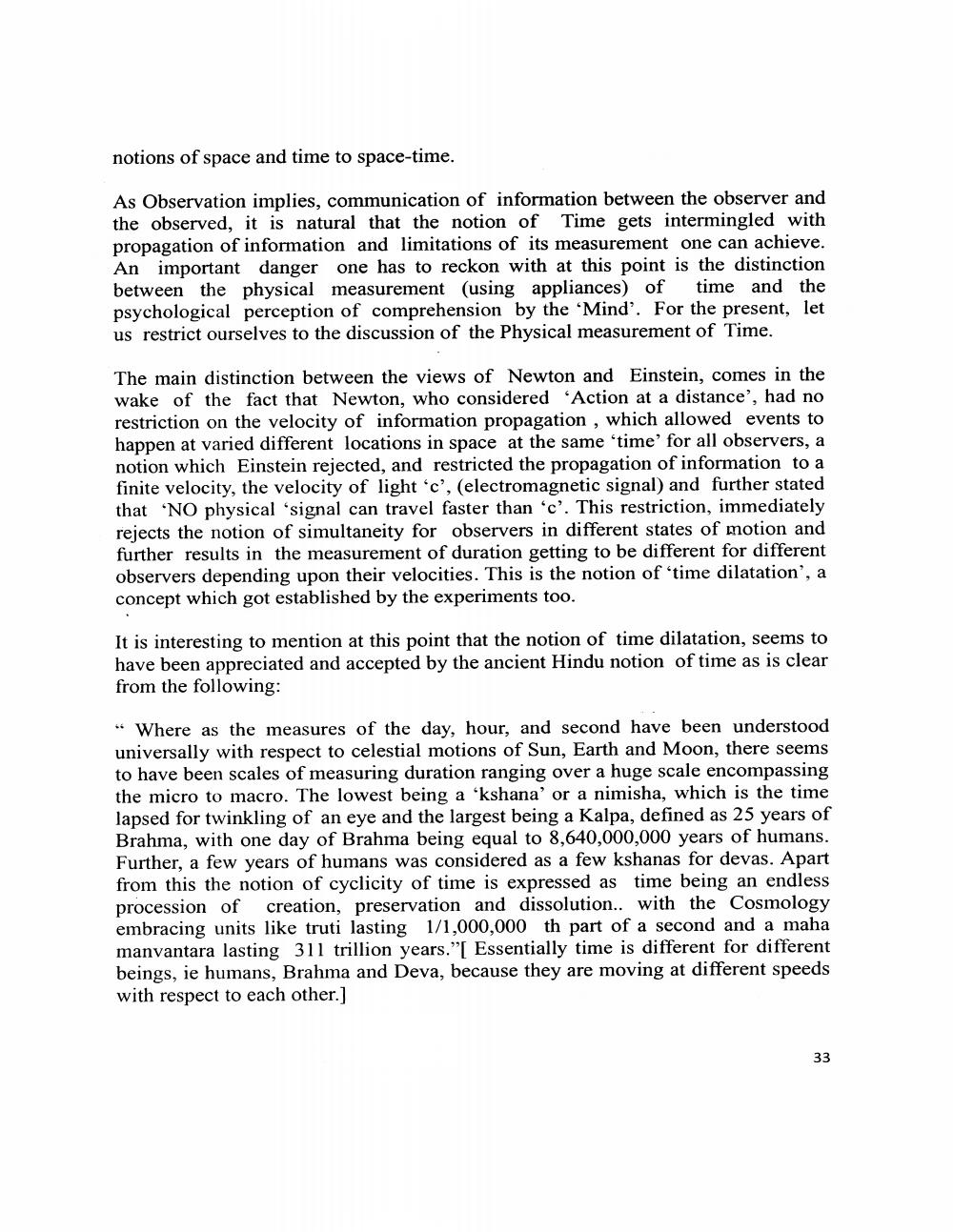________________
notions of space and time to space-time.
As Observation implies, communication of information between the observer and the observed, it is natural that the notion of Time gets intermingled with propagation of information and limitations of its measurement one can achieve. An important danger one has to reckon with at this point is the distinction between the physical measurement (using appliances) of time and the psychological perception of comprehension by the 'Mind'. For the present, let us restrict ourselves to the discussion of the Physical measurement of Time.
The main distinction between the views of Newton and Einstein, comes in the wake of the fact that Newton, who considered 'Action at a distance', had no restriction on the velocity of information propagation, which allowed events to happen at varied different locations in space at the same 'time' for all observers, a notion which Einstein rejected, and restricted the propagation of information to a finite velocity, the velocity of light 'c', (electromagnetic signal) and further stated that 'NO physical 'signal can travel faster than 'c'. This restriction, immediately rejects the notion of simultaneity for observers in different states of motion and further results in the measurement of duration getting to be different for different observers depending upon their velocities. This is the notion of 'time dilatation', a concept which got established by the experiments too.
It is interesting to mention at this point that the notion of time dilatation, seems to have been appreciated and accepted by the ancient Hindu notion of time as is clear from the following:
"Where as the measures of the day, hour, and second have been understood universally with respect to celestial motions of Sun, Earth and Moon, there seems to have been scales of measuring duration ranging over a huge scale encompassing the micro to macro. The lowest being a 'kshana' or a nimisha, which is the time lapsed for twinkling of an eye and the largest being a Kalpa, defined as 25 years of Brahma, with one day of Brahma being equal to 8,640,000,000 years of humans. Further, a few years of humans was considered as a few kshanas for devas. Apart from this the notion of cyclicity of time is expressed as time being an endless procession of creation, preservation and dissolution.. with the Cosmology embracing units like truti lasting 1/1,000,000 th part of a second and a maha manvantara lasting 311 trillion years."[ Essentially time is different for different beings, ie humans, Brahma and Deva, because they are moving at different speeds with respect to each other.]
33




